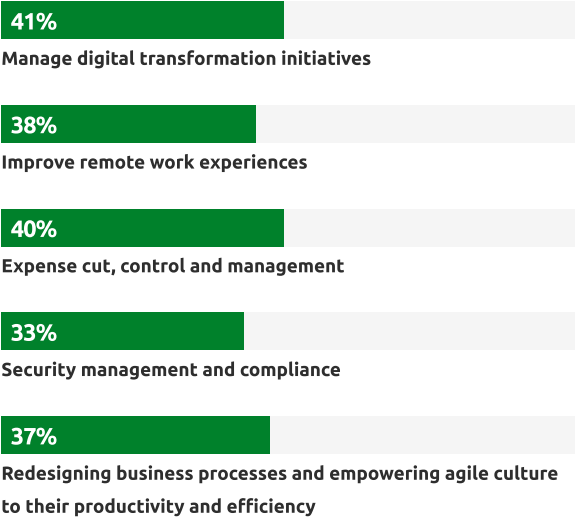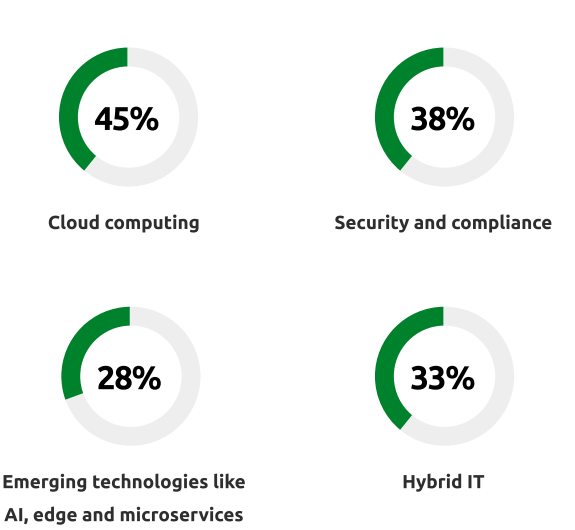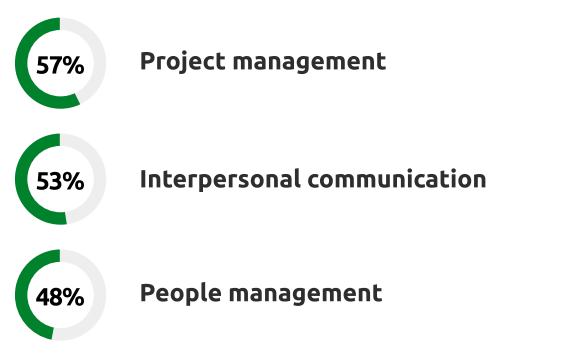Tech Trends and Insights. CTOs Reshape It Priorities To Overcome Crisis Mode
The findings are based on a survey fielded in may-june 2020, yielding responses from 291 CTOs and IT directors from private-sector, mid-size and enterprise organizations worldwide.
The coronavirus pandemic is affecting IT leaders’ roles and priorities and forcing them to consider its long-term impact on their IT organizations. This report encompasses CTOs and CIOs to uncover the landscape realities of their priorities, change drivers, agile operation models, needed skill sets, and perceptions about their place within larger business and technology contexts. Not so long ago, CTOs focused heavily on IT operations and their organization’s technology and design expansion. Now, much of their time is spent on business development, budget optimization and raising bottom lines. CTOs are dispelling myths about managing remote employees and distributed teams, and they have identified that tech pros need to develop faster nontechnical skills to operate efficiently within the current IT reality where cross-functional and business-level communication is necessary.
Priorities in 2020

Digital transformation, expense management, and the remote work experience as the top priority among the IT leaders surveyed in May 2020. Moreover, a full 65 percent of respondents agreed with the statement that the effects of the pandemic are accelerating digital transformation efforts which had started before the pandemic. No less than 75 percent of respondents agreed with the statement that “the current remote work shift has created a more positive view of remote workplace policies and managing distributed teams with less focus on geography.” 28% of respondents said one of their top priorities in the current year will be agile culture empowerment, they are expecting to manage multiple agile operation models in parallel in the future.

71% of our respondents said their organizations’ tech budgets allocate less than 28% of their spending to emerging technologies. Companies aren’t allocating their budget to emerging technologies like artificial intelligence (AI), edge and microservices— particularly as this year’s budgets are reevaluated in the face of economic challenges. 64% of IT leaders say security strategy is tightly integrated as part of the overall IT roadmap, and 82% expect the same three years from now. 30% percent of IT leaders said data analytics would drive the most IT investment in the nearest future.
Gartner and IDC have revised their forecasts for 2020 in the wake of the pandemic
“Gartner sees businesses heading for the cloud in a big way over the next two years, with 2022 cloud spending reaching levels analysts hadn’t previously expected would be attained until 2023 or 2024. IDC expects enterprises to continue spending on existing cloud deployments and sees speeding up cloud projects as a way to control other costs. Delaying other big projects, though, will allow for savings on external service providers and consultants and sees speeding up cloud projects as a way to control other costs. Delaying other big projects, though, will allow for savings on external service providers and consultants and on deferred licensing and infrastructure costs. Forrester analysts also recommend moving to the cloud, or to subscription-based services in general, to make it easier to match spending to revenue, and to cut spending on PC replacements, save for upgrades from Windows 7 to Windows 10, and machines needed for new employees or employees newly working from home. For IT organizations facing budget cuts, Gartner recommends minimizing investments and prioritizing operations that keep businesses running, at least through the rest of this year. The full review is available at CIO.com and is called “Sharp IT budget cuts expected in wake of COVID-19”.
Operating Models in
Parallel
81% of CTOs are attracted to the idea of hiring or partnering top talent without any limitations on geographic location, which is why they're increasingly turning to a remote workforce and managing distributed teams.
What myths were revealed?
Myth: “In remote distributed teams, some decisions may be made randomly, and incorrectly. We will waste time fixing these.”
For instance, in agile software development, when using Scrum, daily stand-ups, sprint planning and grooming, performance reviews and retrospectives ensure the whole team takes part in decision-making
Myth: “Integration of distributed engineers would take too much time”
Onboarding of a new team member whether on-site or remote is naturally associated with the onboarding plan. For example, at Sibedge, we have a multidimensional framework for engineer integration, which has worked for many years.
Myth: “Remote workers are less productive.”
Remote employees avoid daily commutes and face fewer distractions, which allows them to get more work done. Distributed teams, when equipped with the right management and communication tools, can prove even more effective than centralized ones. At our company, we've learned the importance of hiring the right people. When you have the right people on your technical team, location becomes irrelevant to productivity.
Myth: “Remote teams can't collaborate”
With today's technology, however, distance is no longer a barrier to collaboration. At our company, we are always taking three to five minutes for peer-to-peer communication and only after this we start consideration of our work issues.


